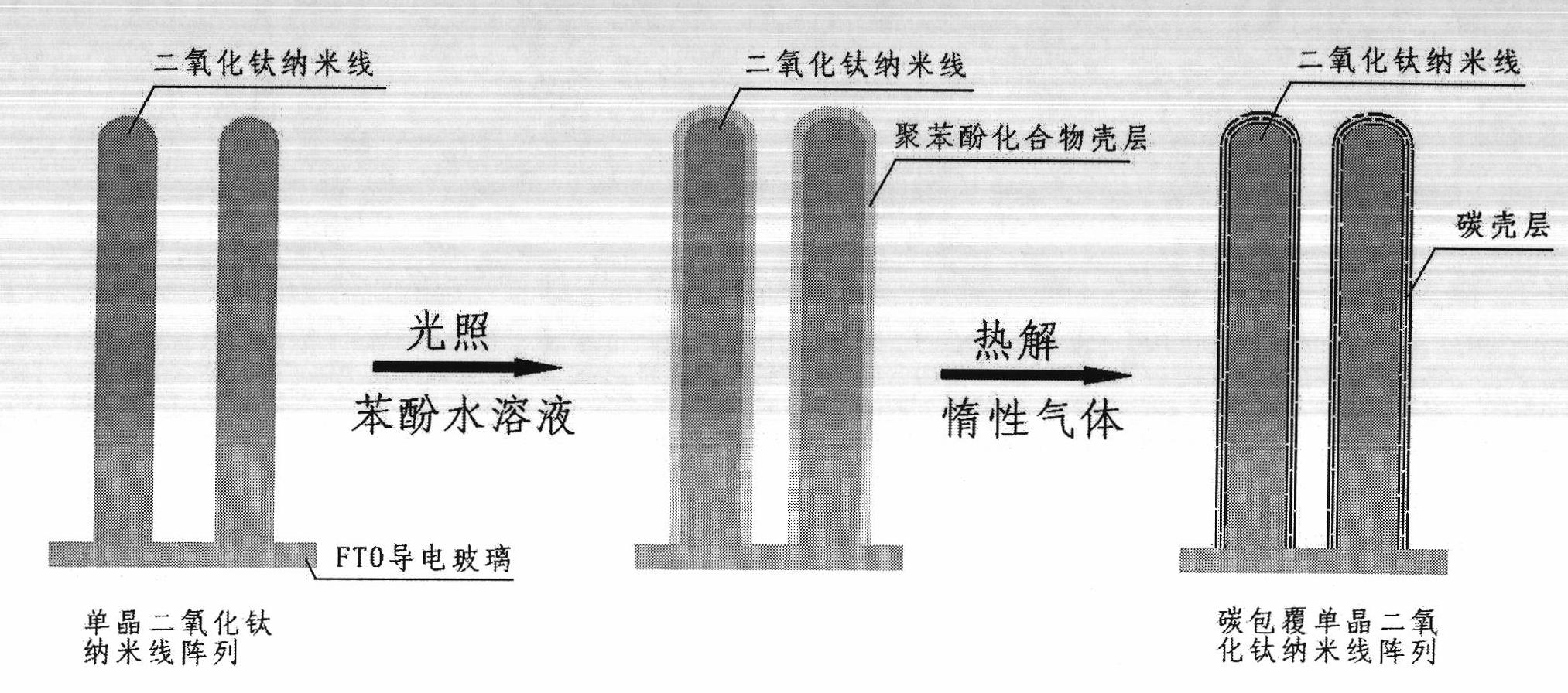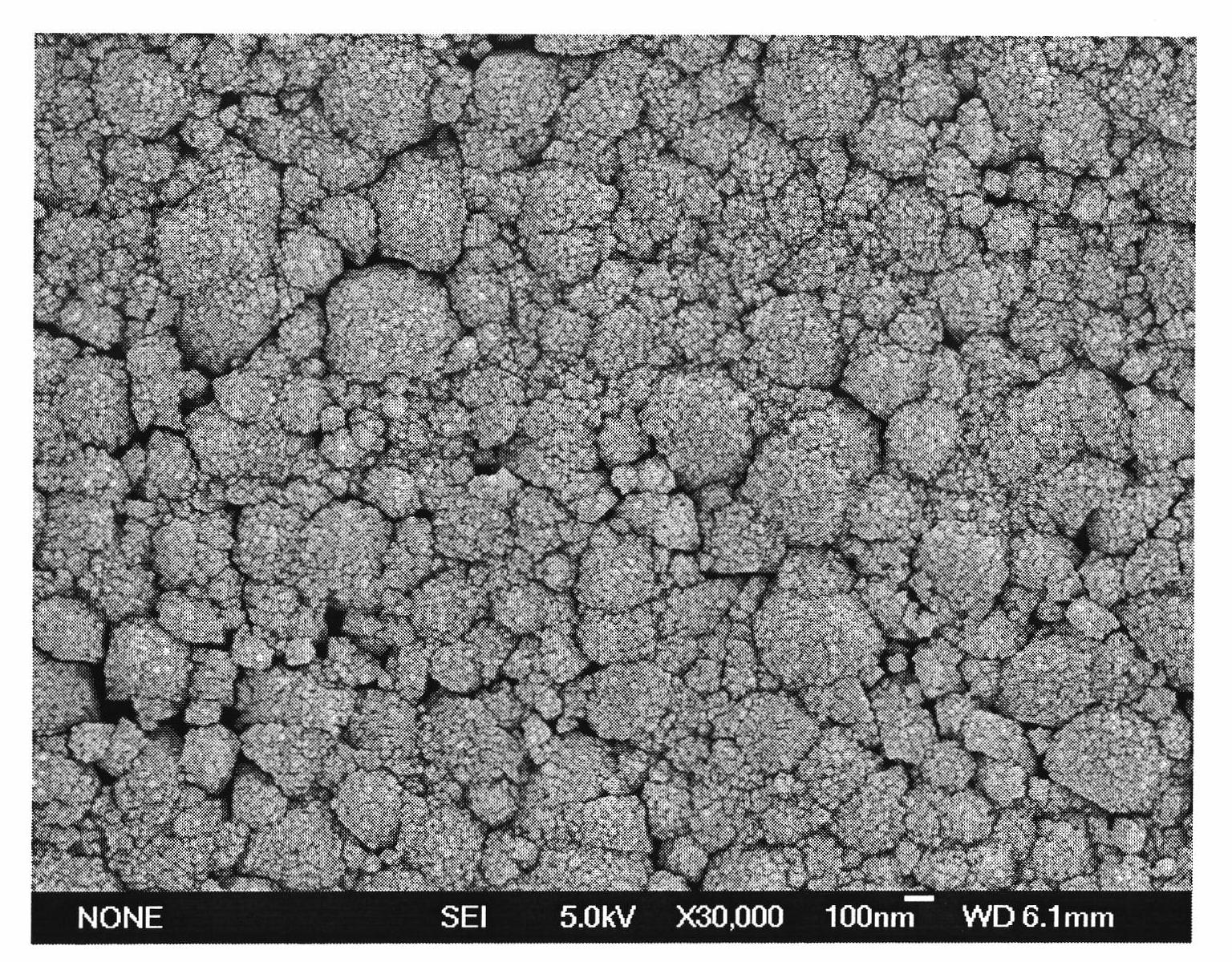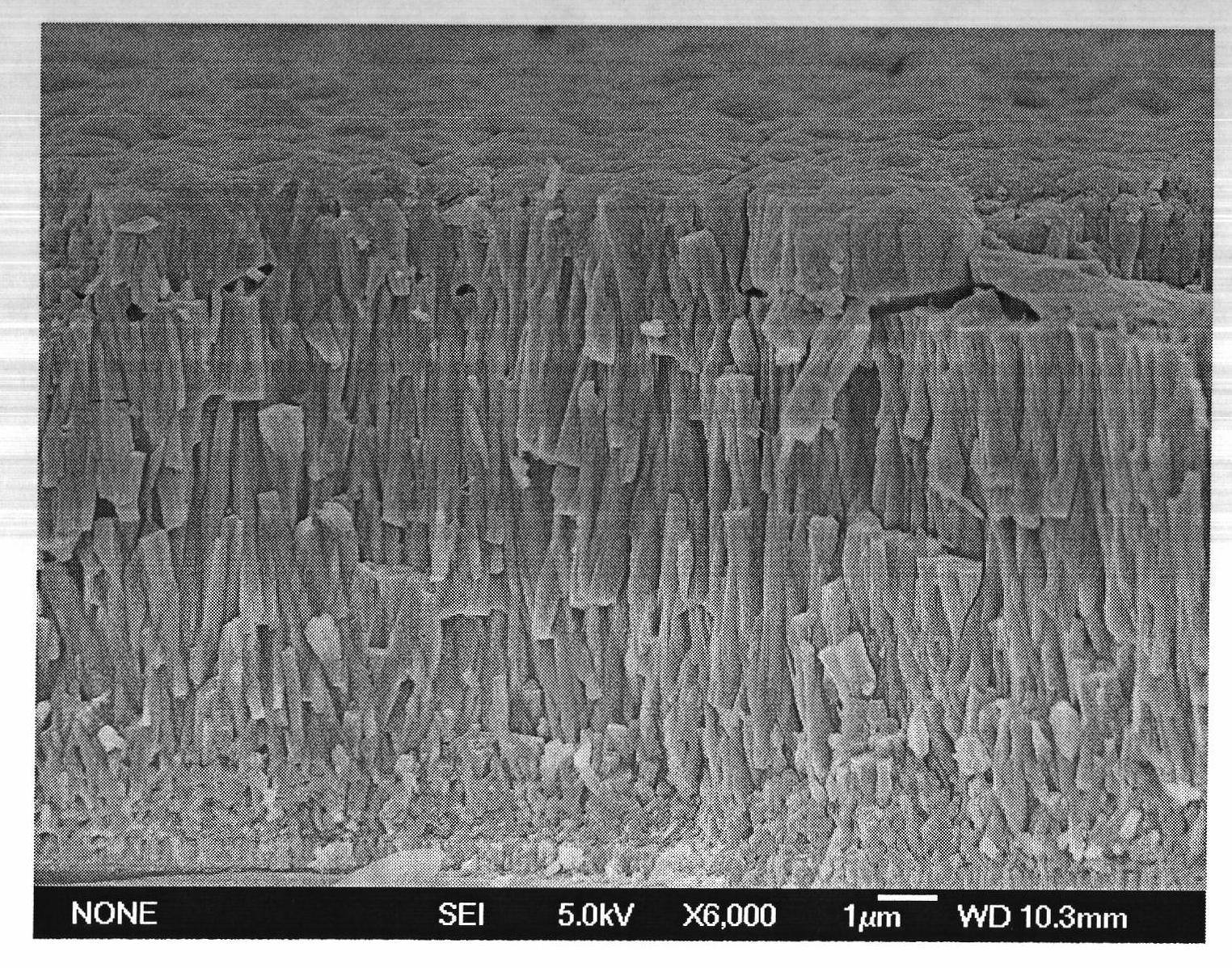Method for preparing nuclear-shell-structured rutile monocrystal titanium dioxide nanowire array with surface-cladding carbon layer
A nanowire array, titanium dioxide technology, applied in the process, microstructure technology, microstructure device and other directions for producing decorative surface effects, can solve problems such as increasing the preparation cost, achieve stable and efficient photocatalytic activity, reduce production costs, The effect of reducing energy consumption in production
- Summary
- Abstract
- Description
- Claims
- Application Information
AI Technical Summary
Problems solved by technology
Method used
Image
Examples
preparation example Construction
[0027] The preparation of the rutile single crystal titania nanowire array can refer to the following method, but it is not necessary to follow the following method. The variation of the preparation method of the rutile single crystal titanium dioxide nanowire array does not constitute a limitation of the present invention.
[0028] Preparation of rutile single-crystal titanium dioxide nanowire arrays: under vigorous stirring, add 12ml of titanium tetrachloride to 400ml of ice water, cool in an ice-water bath, stir for 30 minutes, remove the ice-water bath, and continue stirring at room temperature for 2 hours to obtain hydrolyzed titanium tetrachloride liquid. At room temperature, immerse the cleaned substrate (conductive glass, silicon wafer, titanium wafer, glass, quartz or ceramics, etc.) in titanium tetrachloride hydrolysis solution for 24 hours, take it out, wash it with absolute ethanol three times, dry it, and then heat it at 550°C for 30 minutes , that is, dip-coated...
Embodiment 1
[0032] The prepared rutile single crystal titanium dioxide nanowire array (ceramic sheet as the substrate) was immersed in the aqueous solution of phenol and chloroplatinic acid, the concentrations were 0.5g / L and 1.25×10 -5 g / L. Solar radiation (about 38mJ / cm 2 ) after 8 hours, rinsed with distilled water, and dried at 80°C. Then, under the protection of high-purity argon, pyrolyze at 1000°C for 2 hours to obtain a nanowire array of rutile single crystal titanium dioxide core-shell structure coated with a carbon layer.
Embodiment 2
[0034] The prepared rutile single crystal titanium dioxide nanowire array (titanium sheet as the substrate) was immersed in 0.5 g / L phenol aqueous solution. 300W xenon lamp (PerkinElmer, light intensity about 58mJ / cm 2 ) after 6 hours of irradiation, rinsed with distilled water, and dried at 80°C. Then, under the protection of high-purity nitrogen, it was pyrolyzed at 800°C for 3 hours to obtain a nanowire array of rutile single crystal titanium dioxide core-shell structure coated with a carbon layer.
PUM
| Property | Measurement | Unit |
|---|---|---|
| Pyrolysis temperature | aaaaa | aaaaa |
| Thickness | aaaaa | aaaaa |
| Photocurrent density | aaaaa | aaaaa |
Abstract
Description
Claims
Application Information
 Login to View More
Login to View More - R&D
- Intellectual Property
- Life Sciences
- Materials
- Tech Scout
- Unparalleled Data Quality
- Higher Quality Content
- 60% Fewer Hallucinations
Browse by: Latest US Patents, China's latest patents, Technical Efficacy Thesaurus, Application Domain, Technology Topic, Popular Technical Reports.
© 2025 PatSnap. All rights reserved.Legal|Privacy policy|Modern Slavery Act Transparency Statement|Sitemap|About US| Contact US: help@patsnap.com



